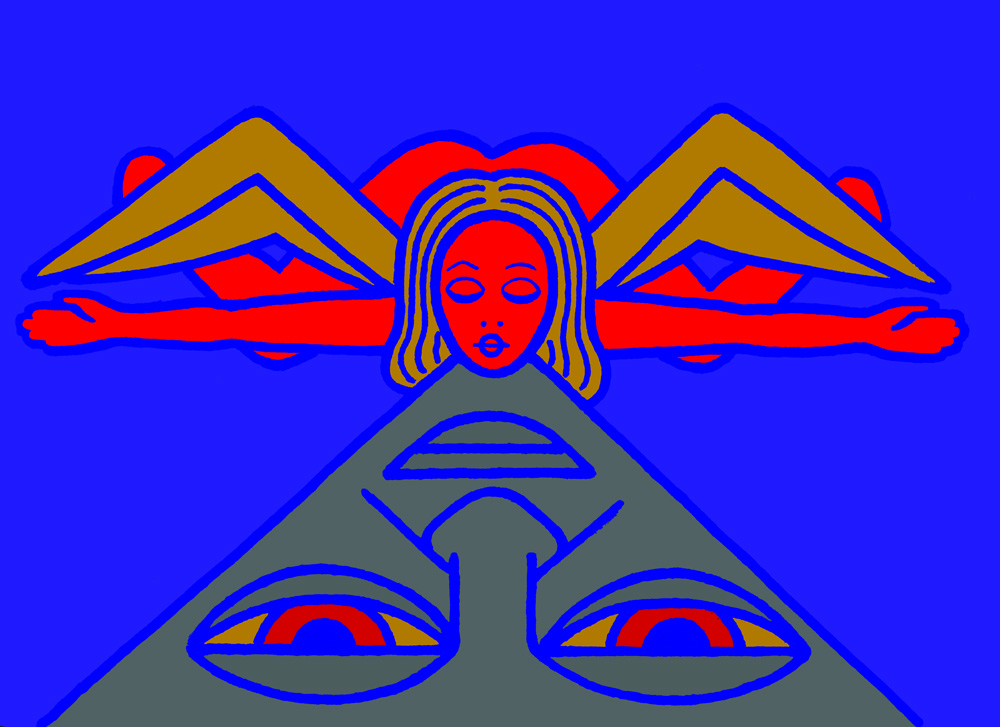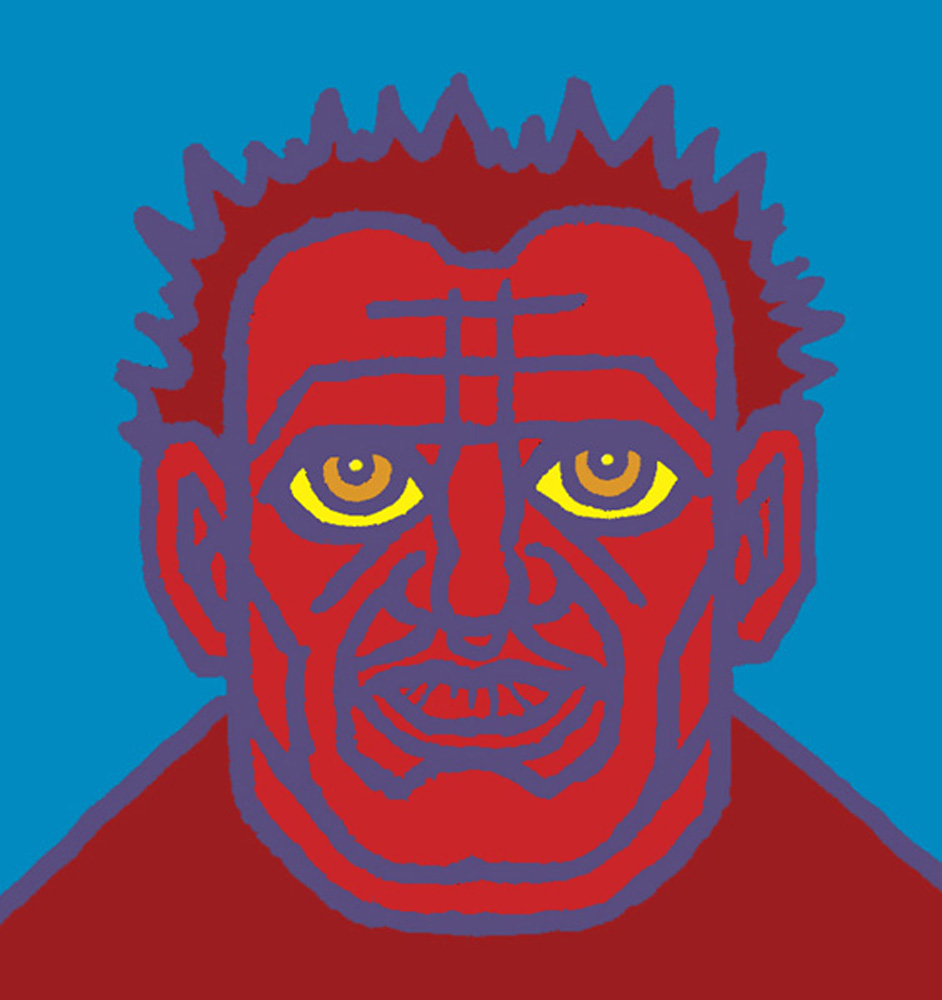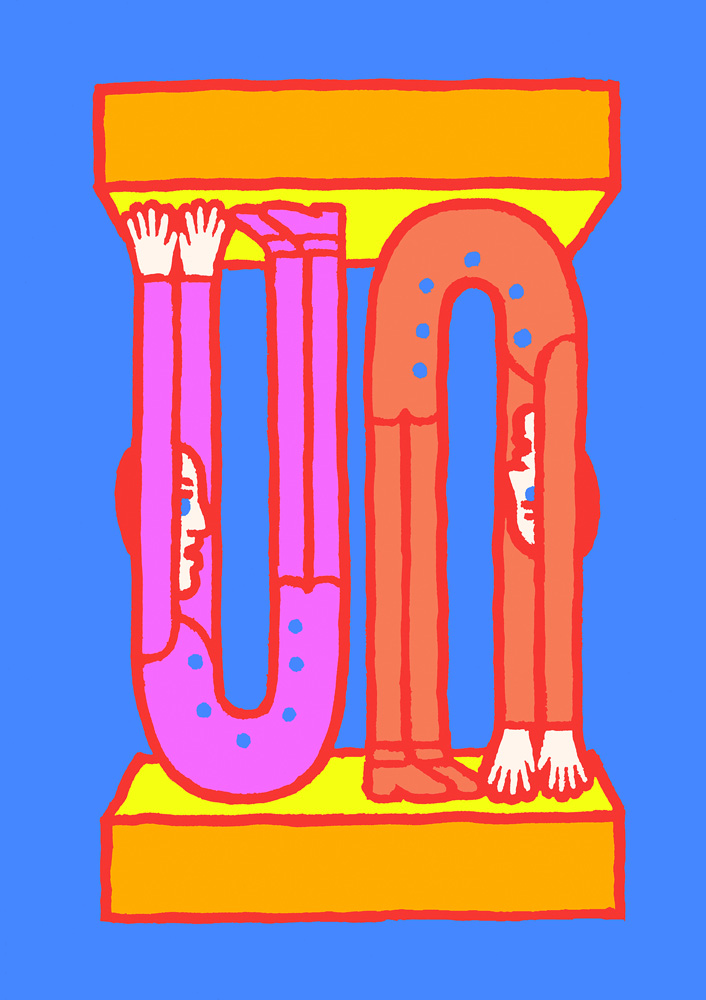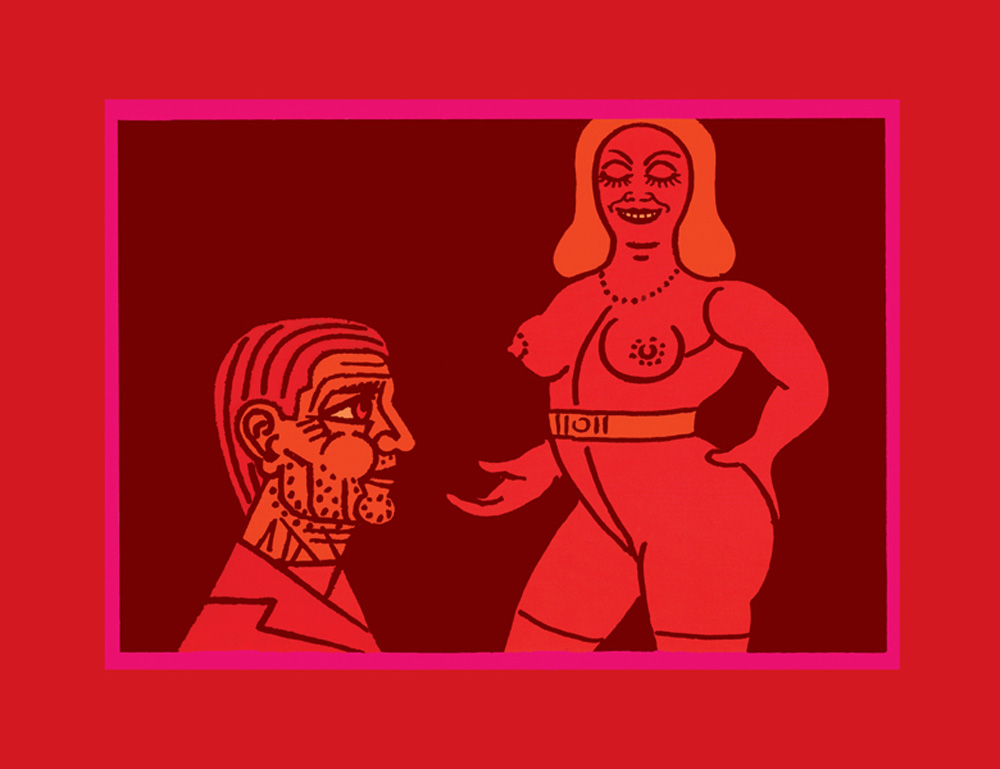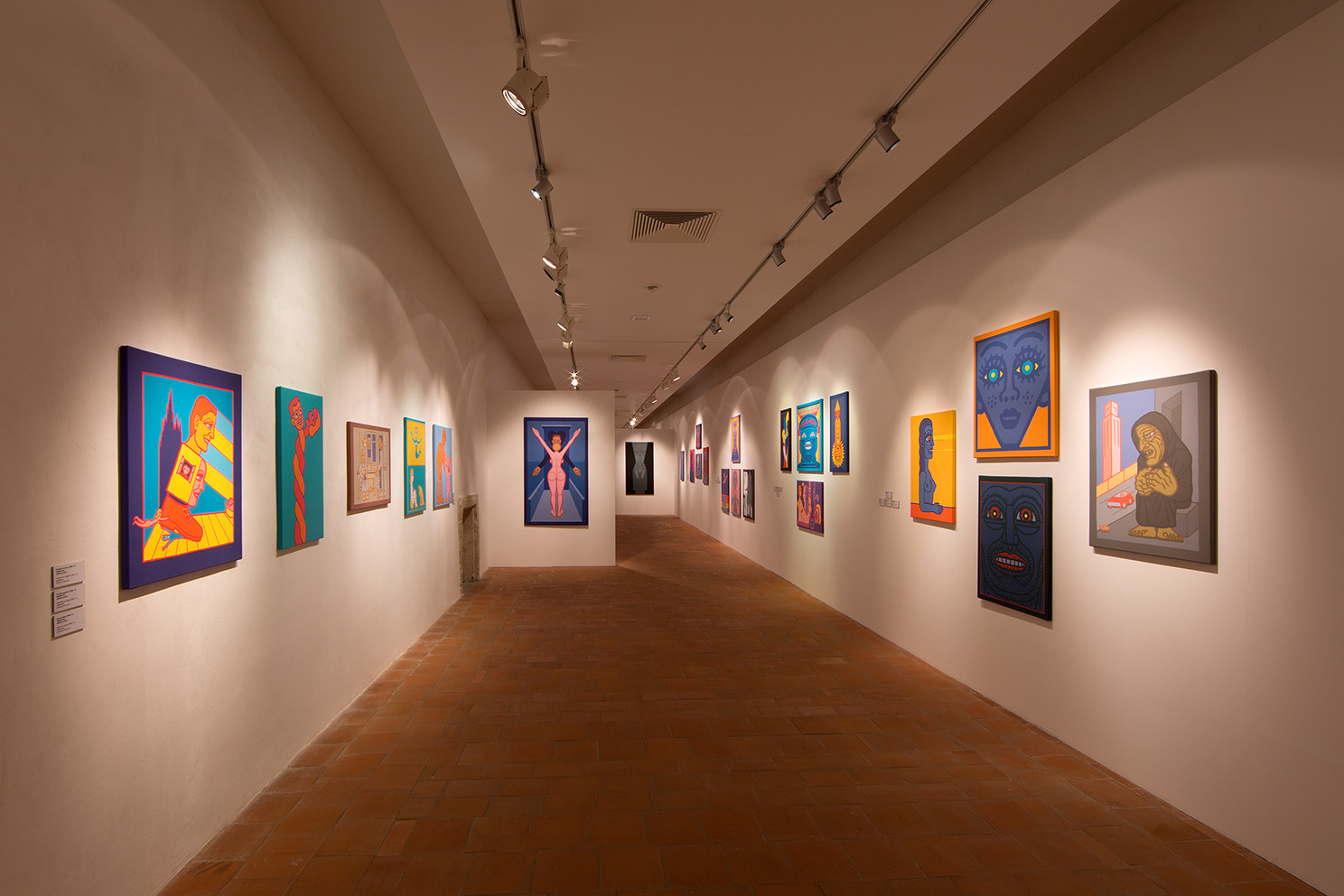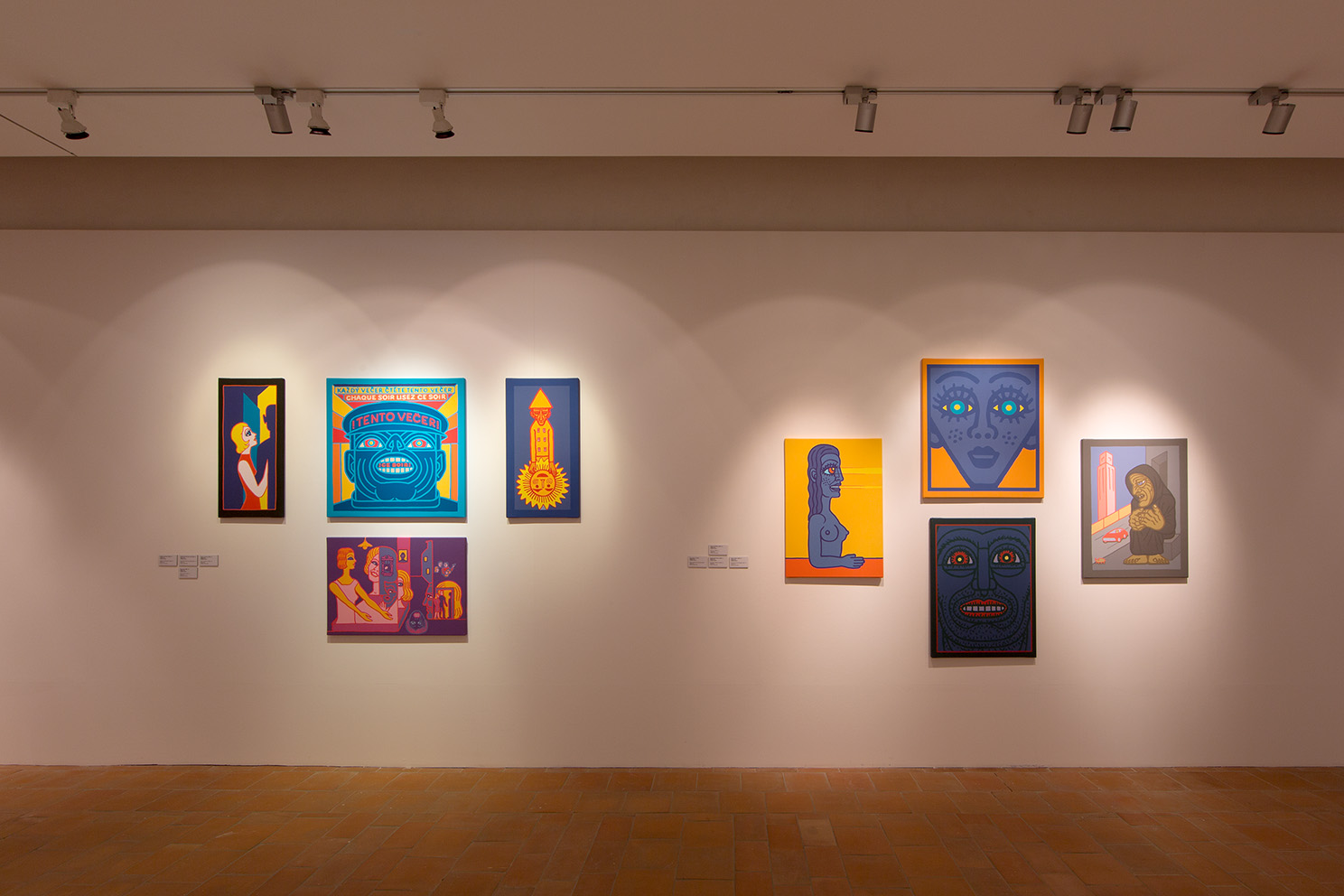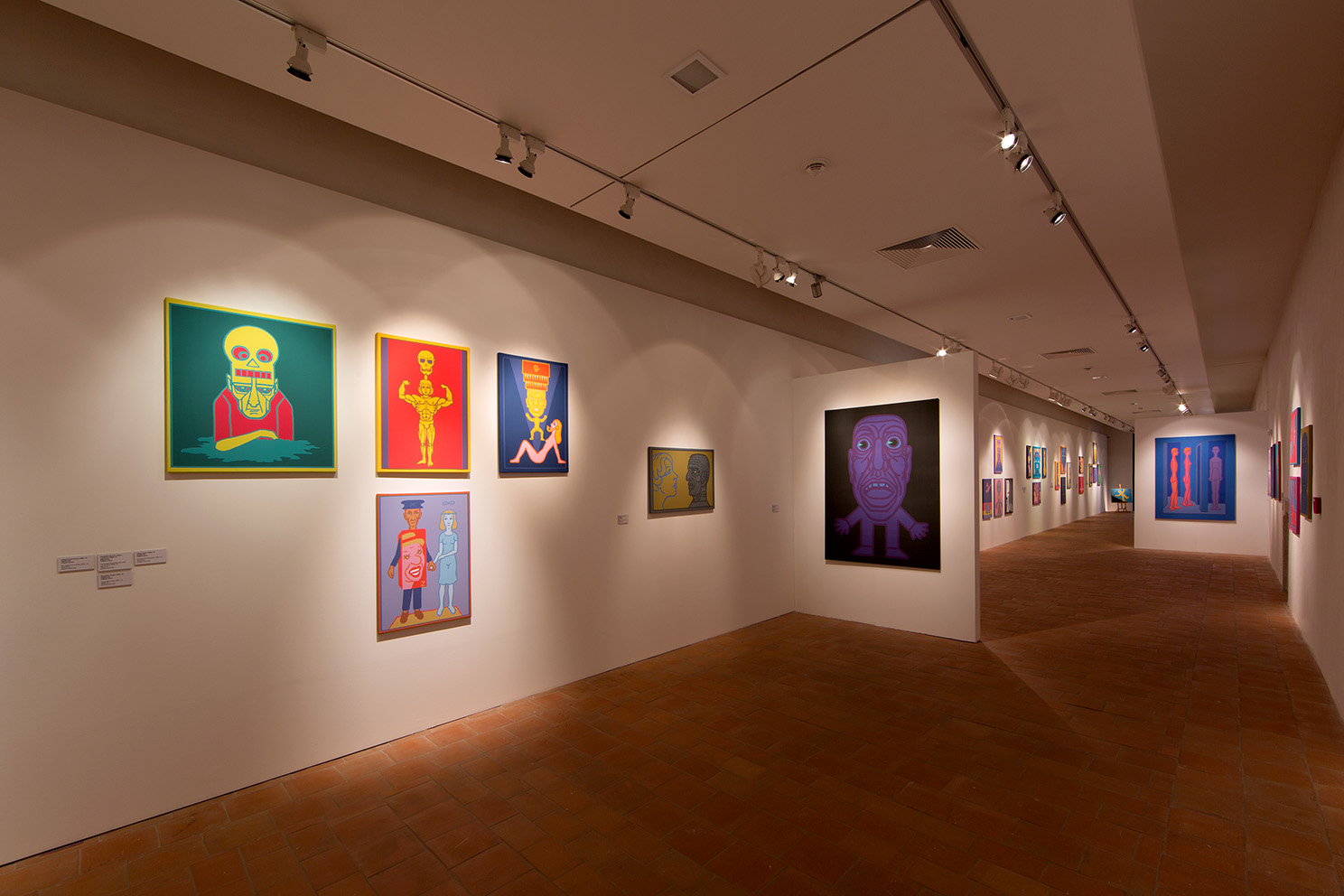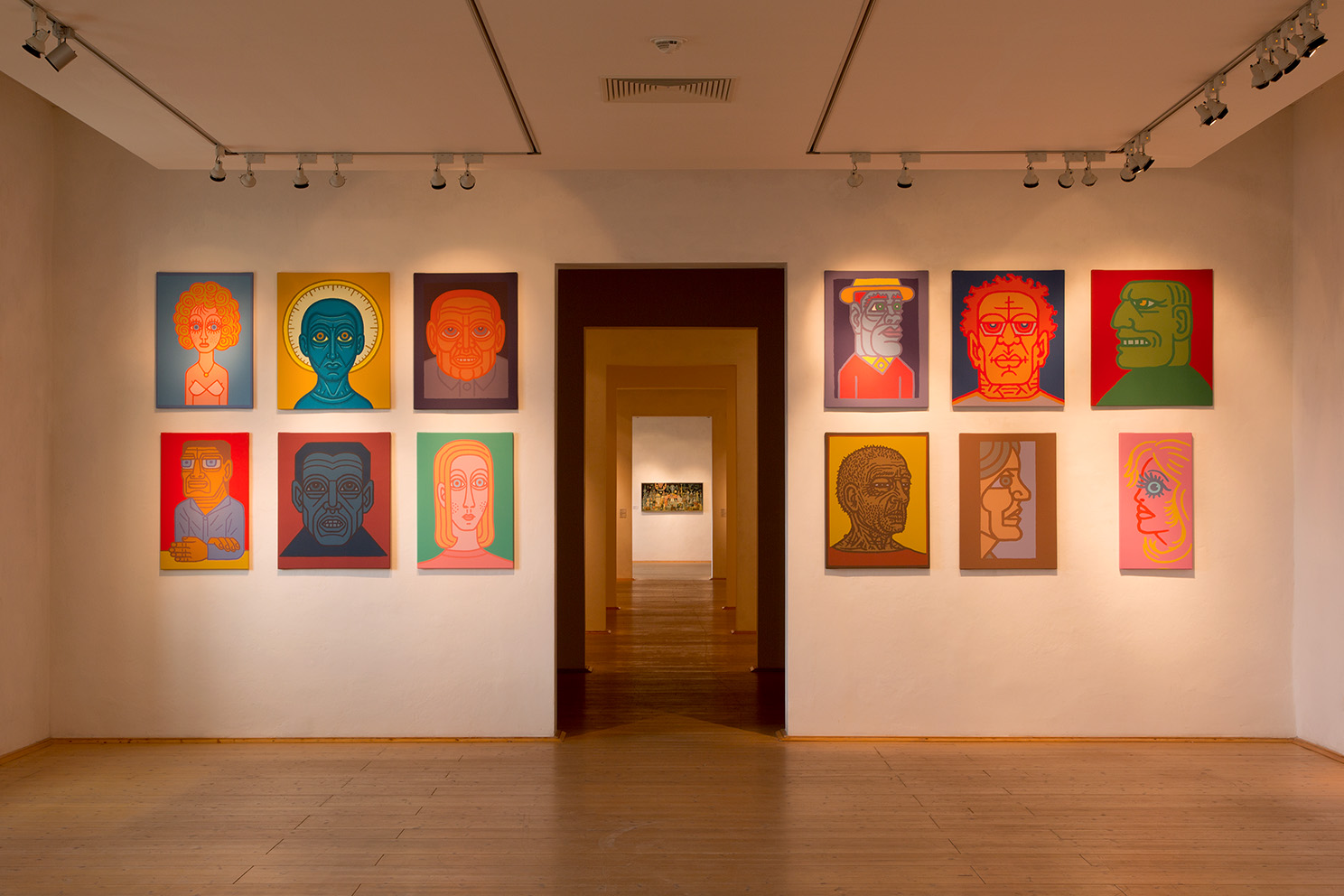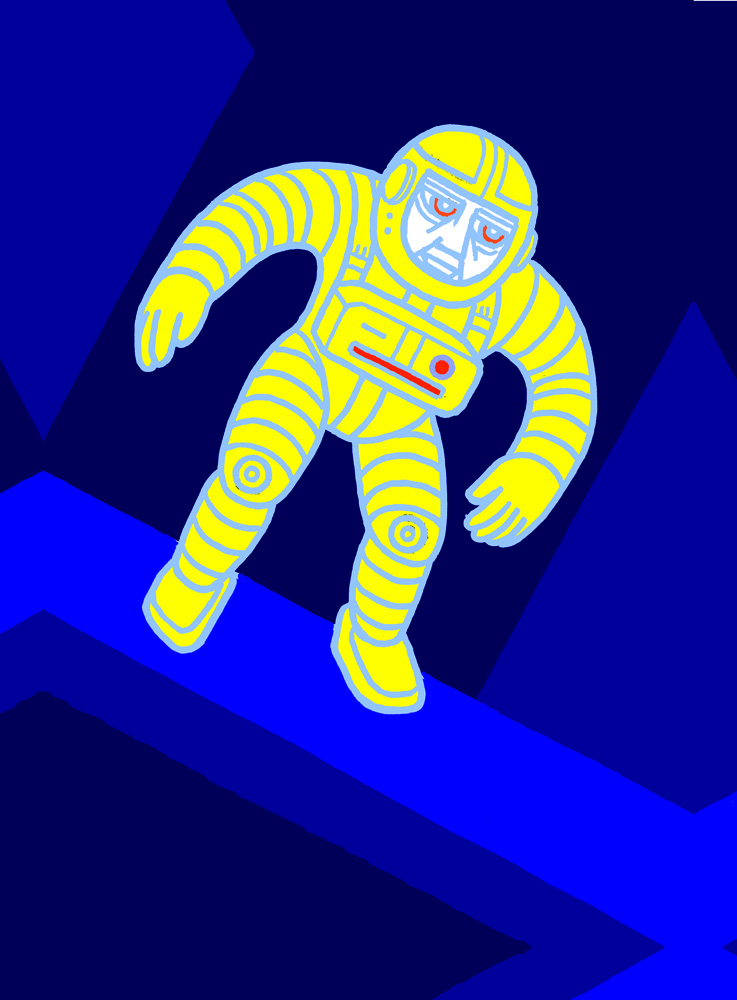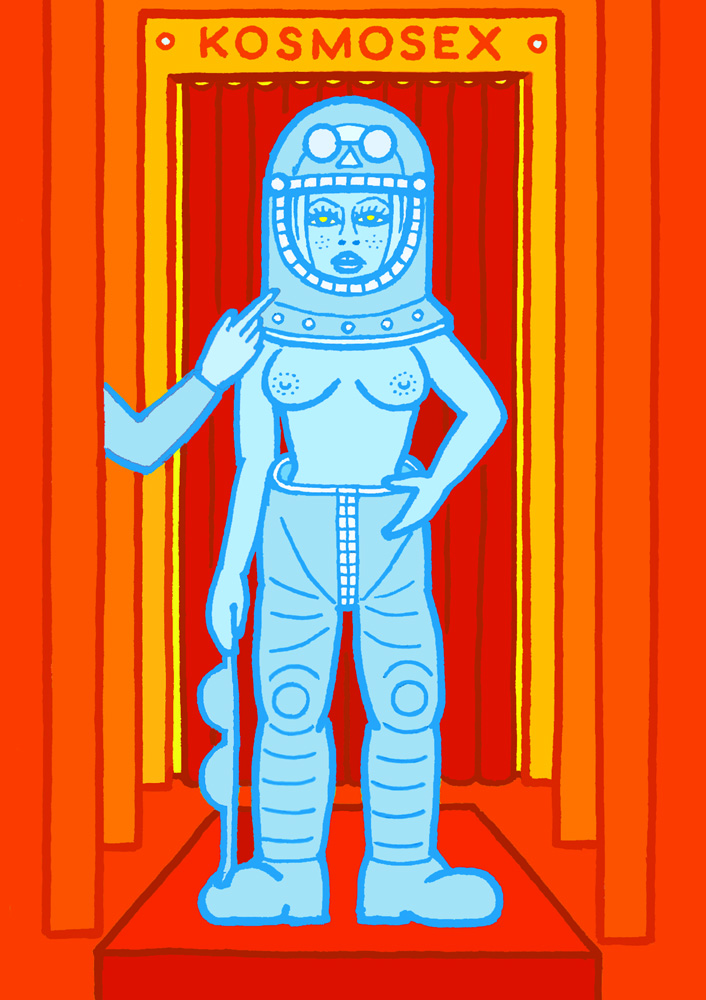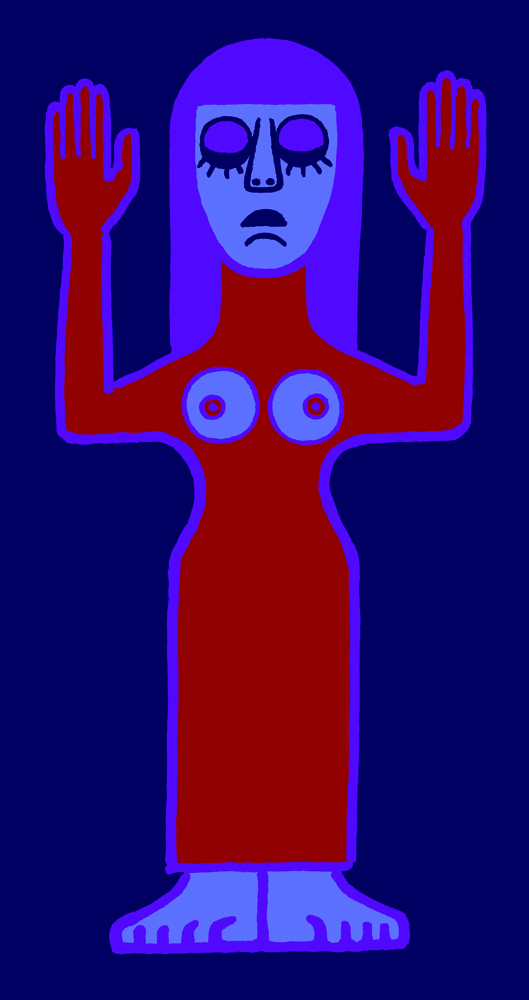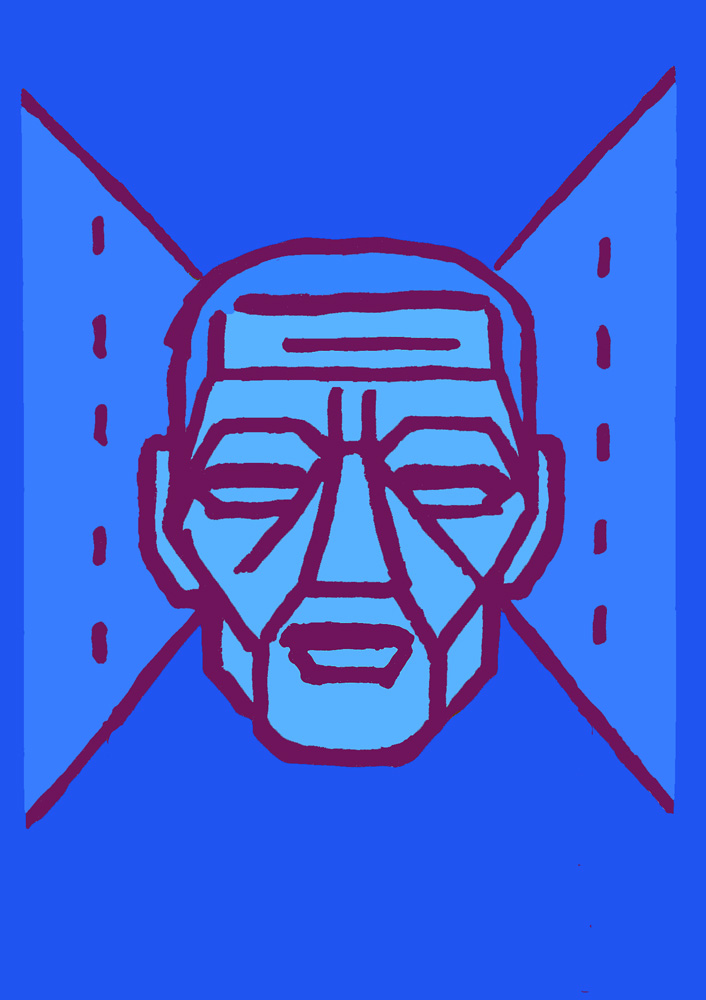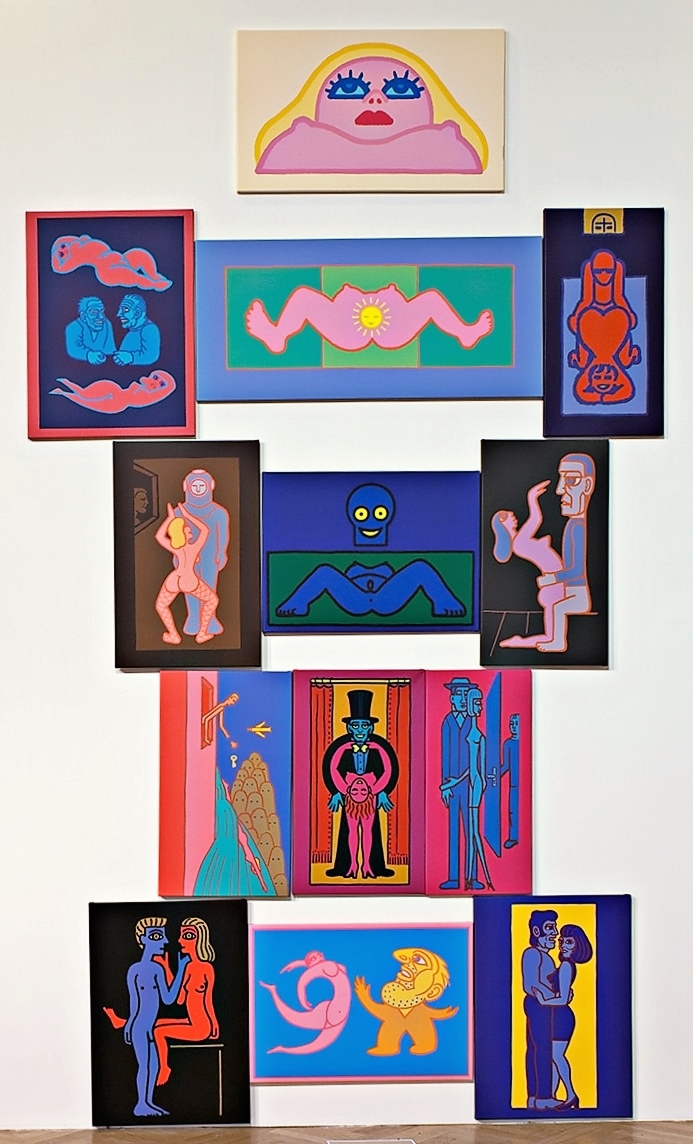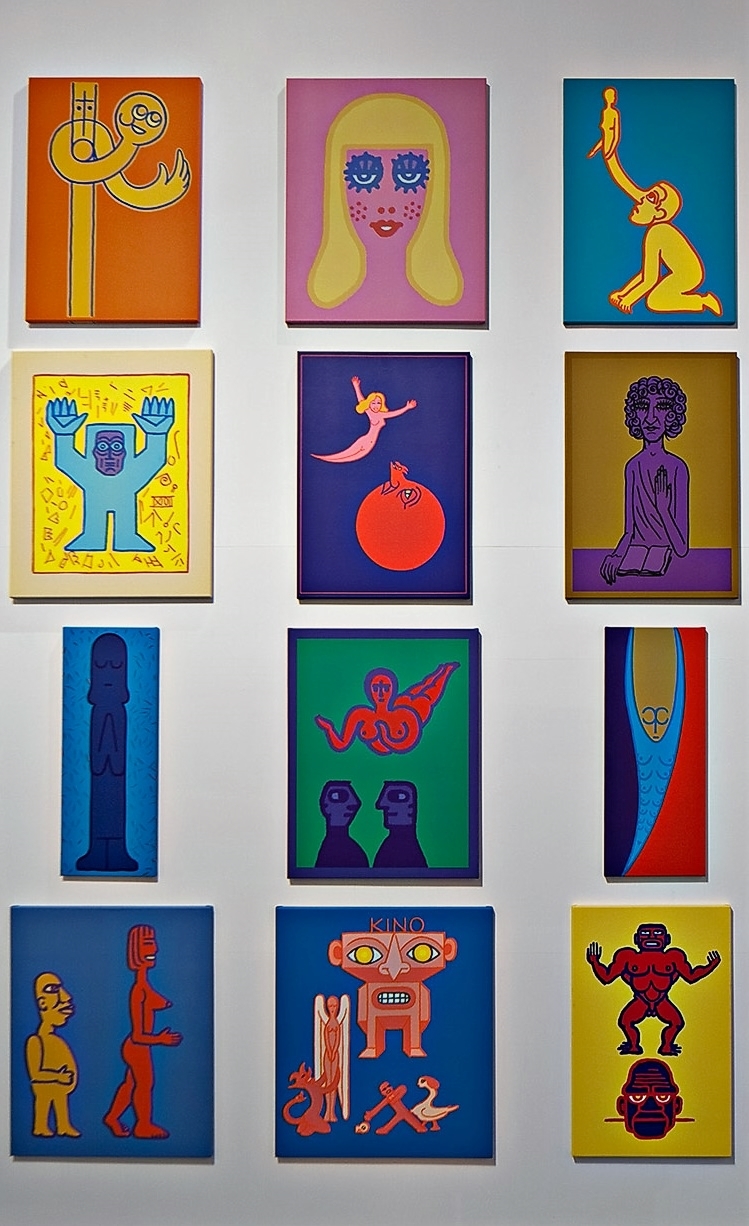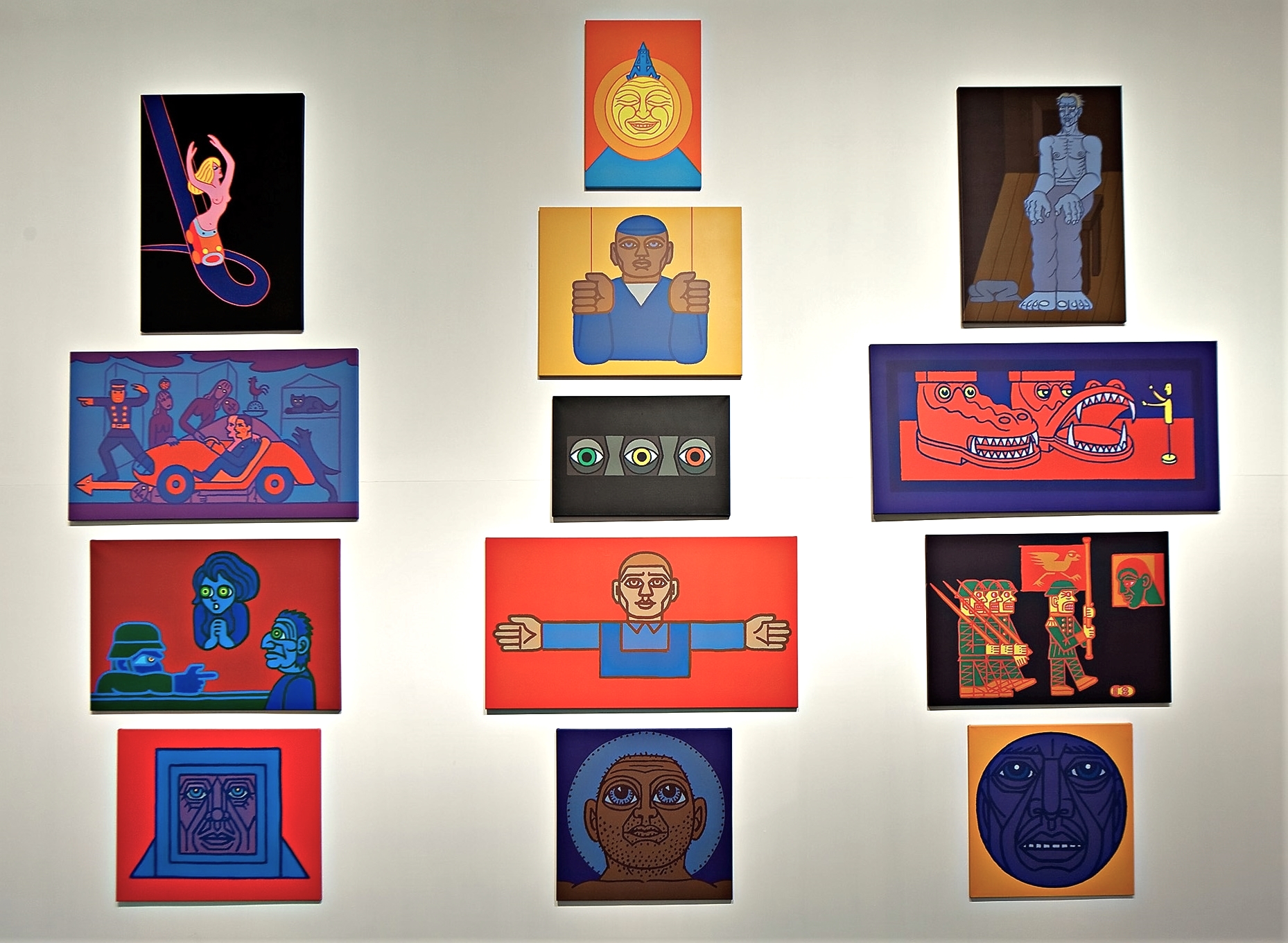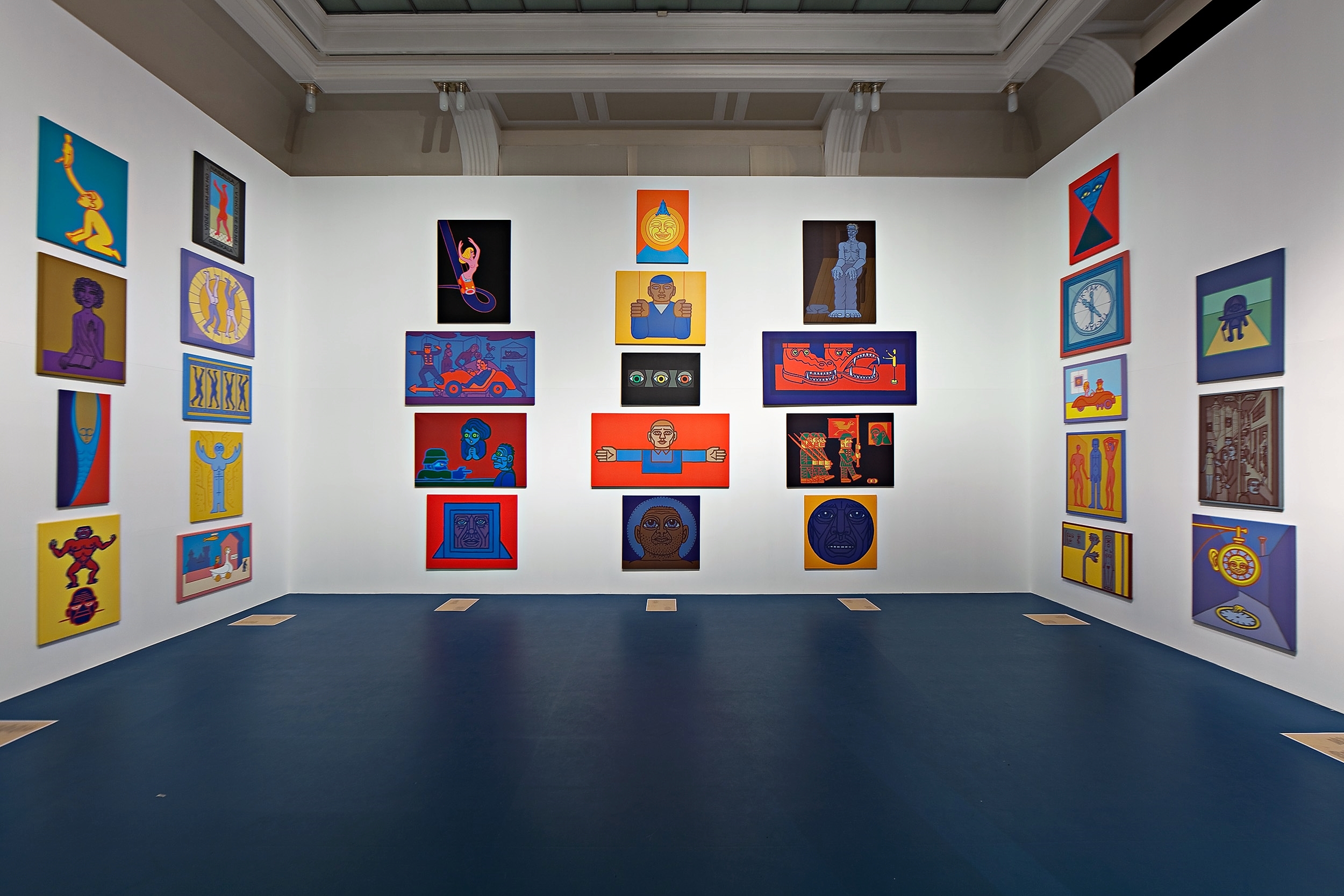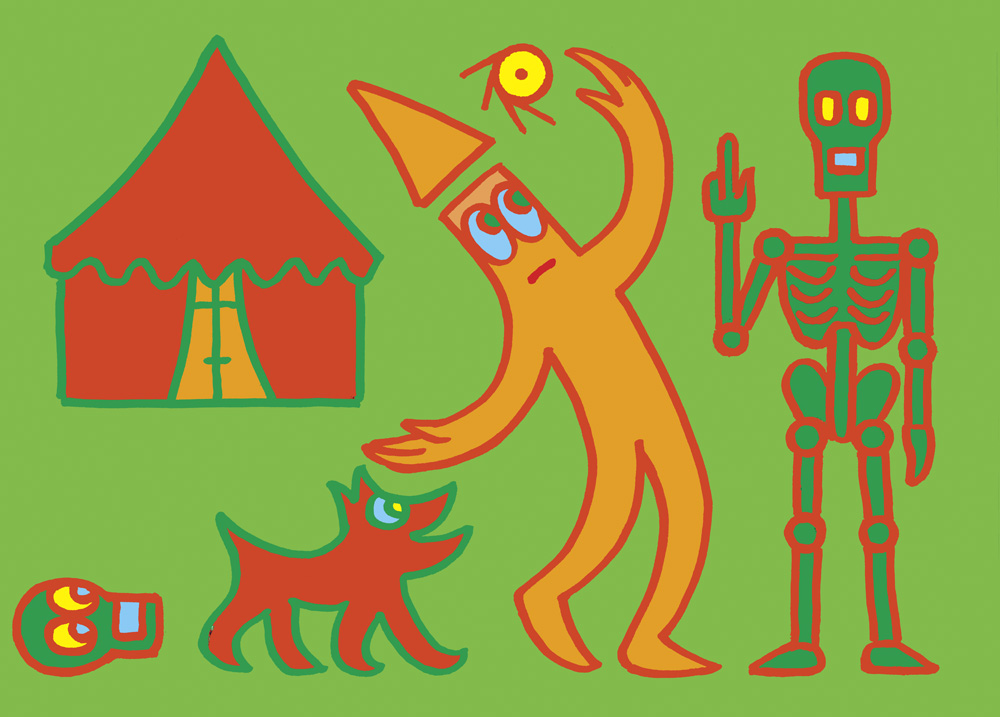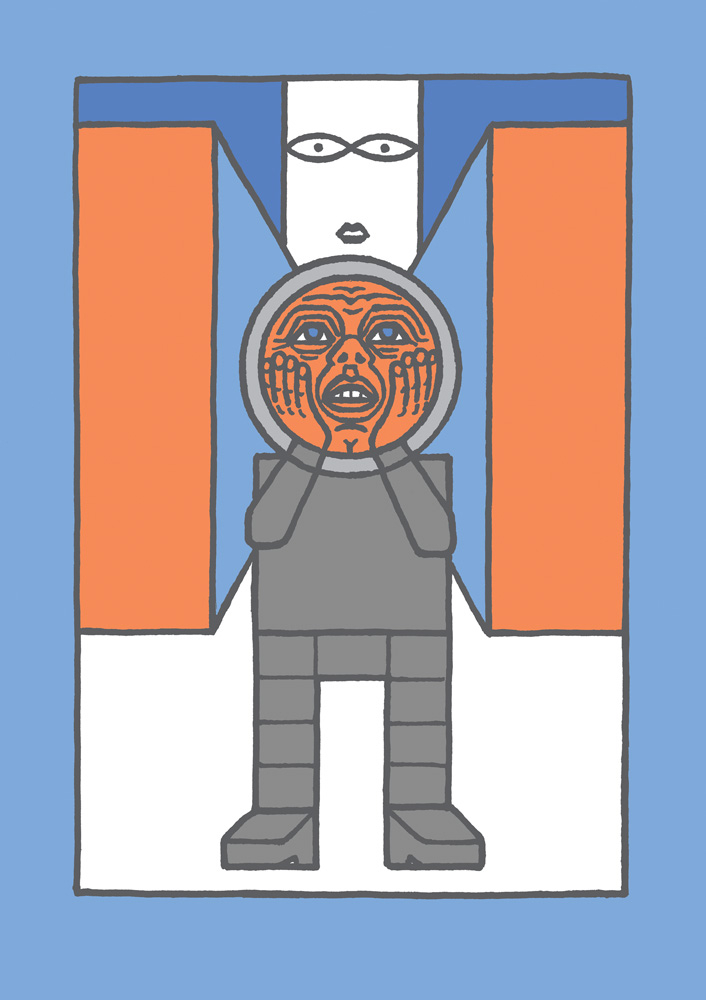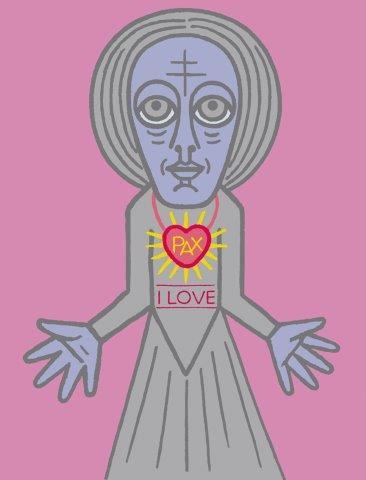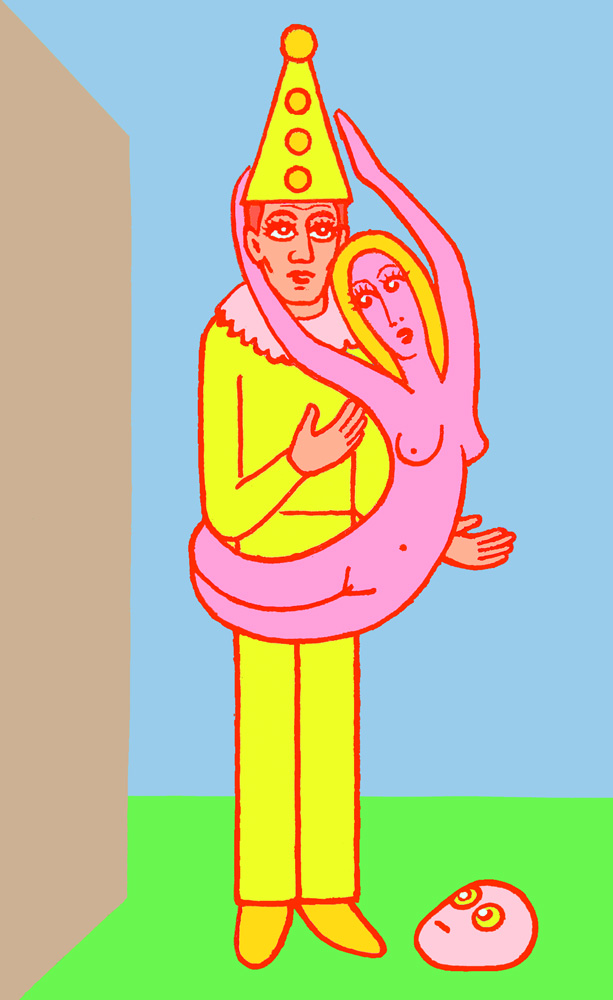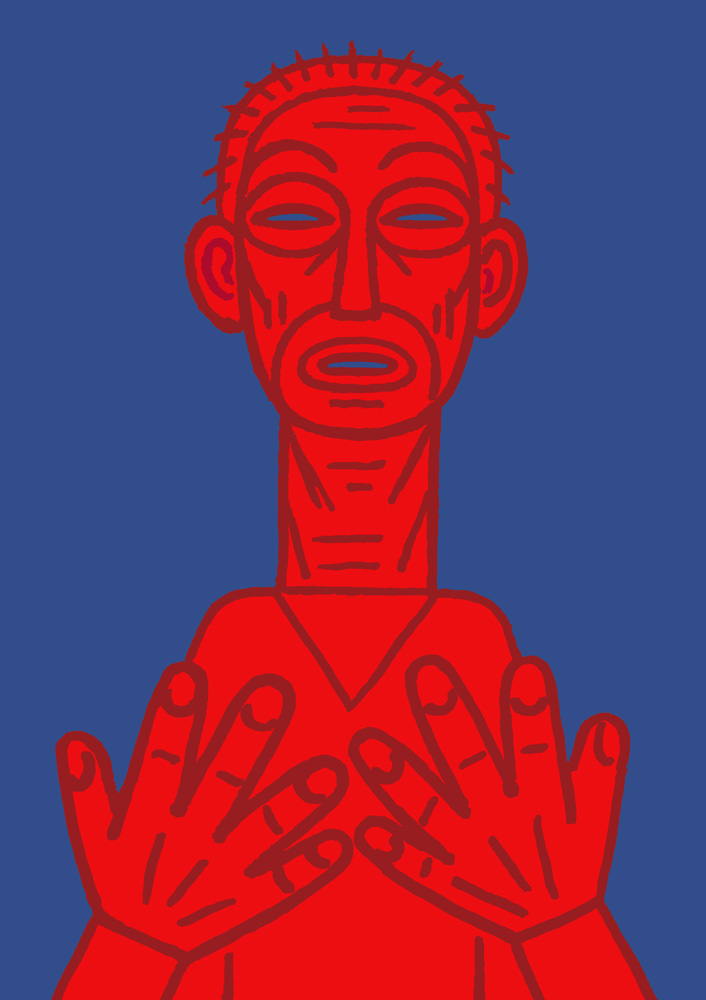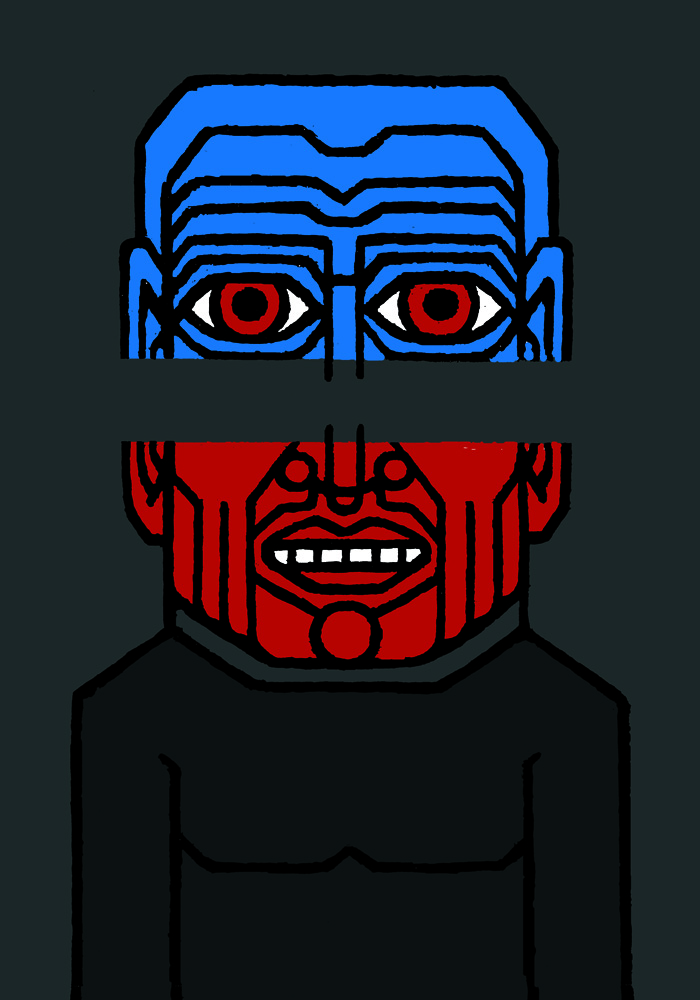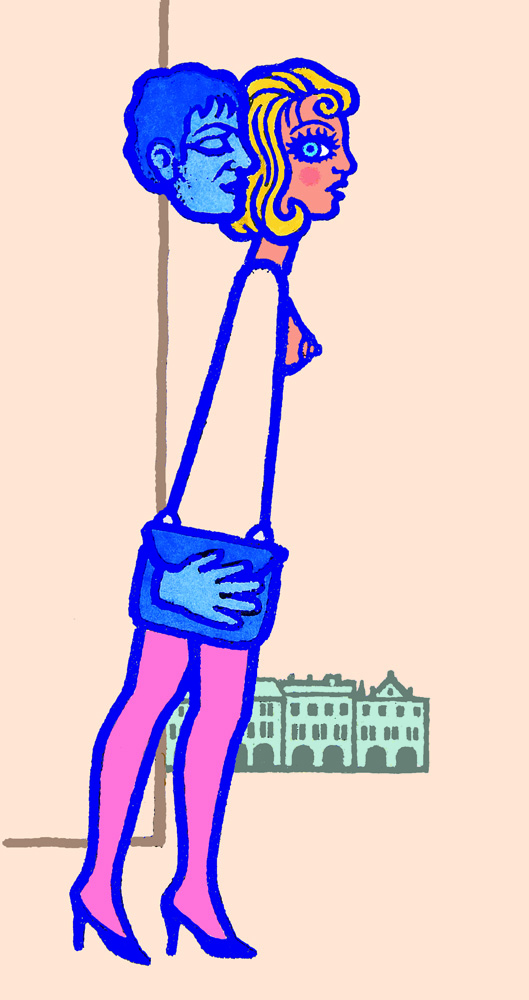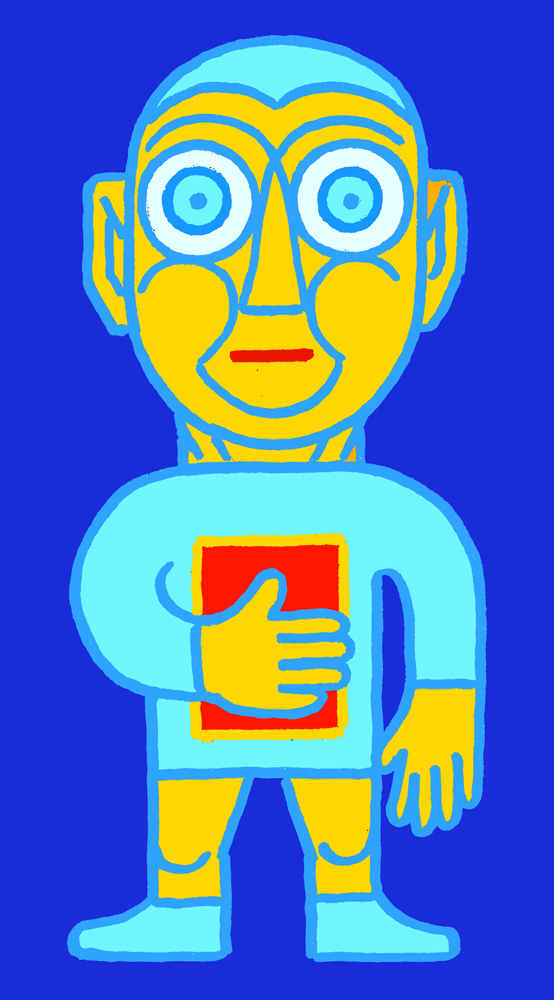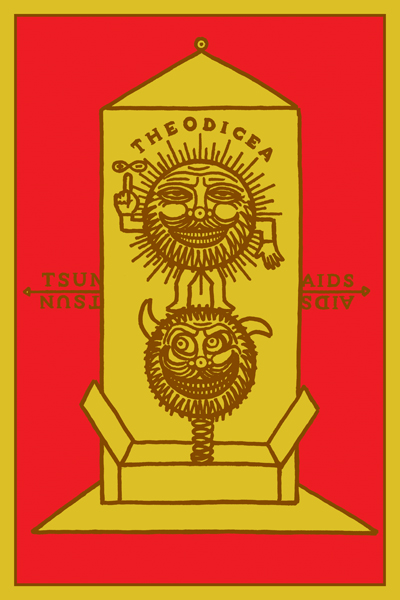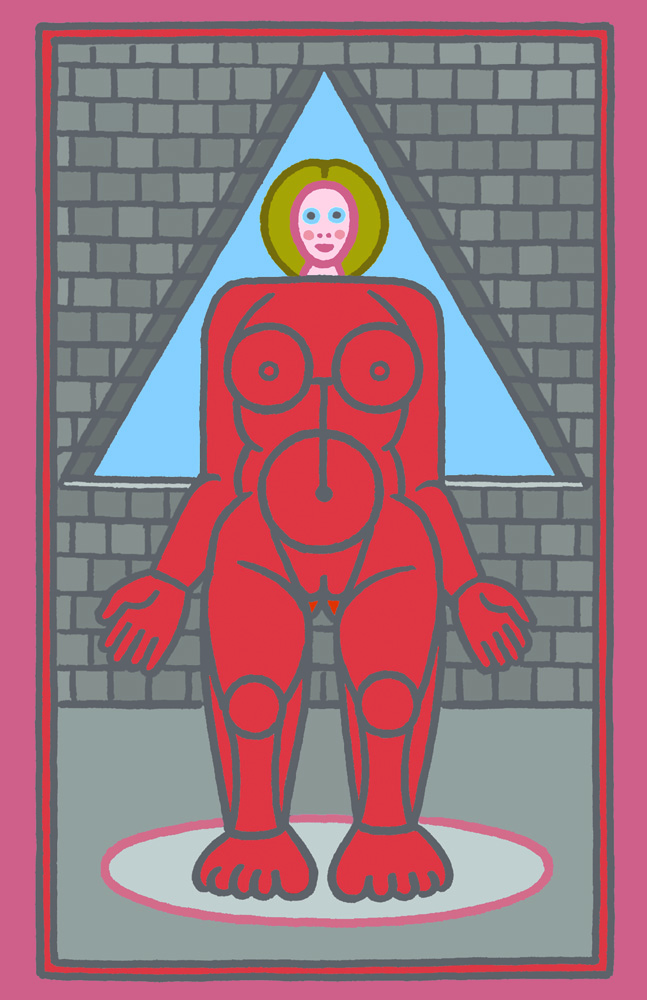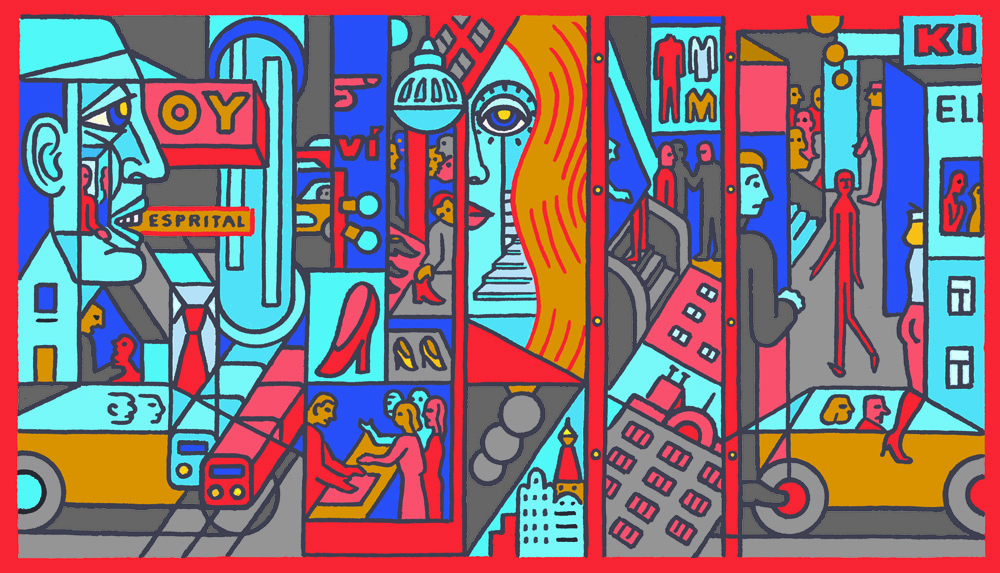I started working with machines in the early 1990s, when I drew some subjects and made collages, which I then had photocopied in order to put them together without extra traces of gluing, and could further retouch and perfect the lines and photocopy them again. Later, when copy machines used for advertising purposes could print in red, blue, brown or green, which were all available colours, I had my drawings printed in colour on coloured paper. At first, I did so in a linear manner, later I cut out figures of the paper – or to be precise, I had them cut out, as I made sure (as I still do) to avoid mechanical work, and I had them glued on other coloured papers. Over the course of a decade, a series of collages of my drawings was made in this fashion. I had them photocopied to create something like graphic art for the poor.
At the time of my big exhibition in the Prague National Gallery in 2006–7 I became intrigued by the computer, as it allowed me to process the drawn subjects much more directly and subtly. So I bought the hardware with two monitors, a bigger one for future paintings, a smaller one for technical details. A friend, graphic artist, introduced me to the basic techniques I needed. I made very detailed notes and at first I followed them, but before long I mastered the techniques to the point of going through them quite confidently. The results are in essence no different from the paintings that I used to paint on canvas with a brush. Also, it saved me the hard work of re-painting the areas and lines with a brush while perfecting the painting; it requires far less effort to get the mechanical work done. In my computer I can mix whatever colours I want, and further modify them. I mix them from three basic colours: red, blue, yellow, and black. I don’t use colour samplers – the shade is carefully mixed and applied before the result is satisfying, I never rush through the process.
(Excerpt from an interview with Pavel Brázda by Jiří Fiedor)


